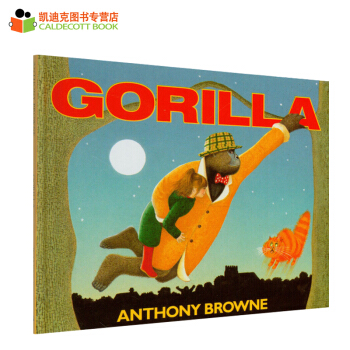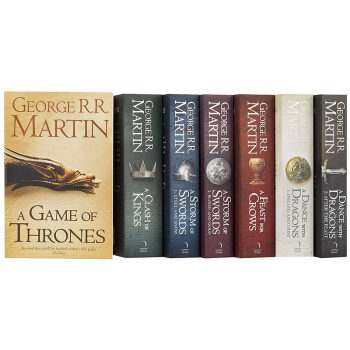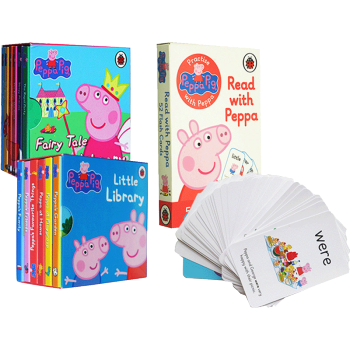![The Curious Incident of the Dog in the Night-time 夜色中好奇的狗 英文原版 [平装]](https://pic.windowsfront.com/19238095/rBEIC1AGfyoIAAAAAAEu6tzBSlwAAEGcgBf5VUAAS8C725.jpg)

具体描述
内容简介
Winner of the Whitbread Book of the Year 'Outstanding...a stunningly good read' Observer 'Mark Haddon's portrayal of an emotionally dissociated mind is a superb achievement... Wise and bleakly funny' Ian McEwan The Curious Incident of the Dog in the Night-Time is a murder mystery novel like no other. The detective, and narrator, is Christopher Boone. Christopher is fifteen and has Asperger's Syndrome. He knows a very great deal about maths and very little about human beings. He loves lists, patterns and the truth. He hates the colours yellow and brown and being touched. He has never gone further than the end of the road on his own, but when he finds a neighbour's dog murdered he sets out on a terrifying journey which will turn his whole world upside down.作者简介
Mark Haddon is an author, illustrator and screenwriter who has written fifteen books for children and won two BAFTAs. He lives in Oxford.内页插图
精彩书评
"I have never read anything quite like Mark Haddon's funny and agonizingly honest book, or encountered a narrator more vivid and memorable. I advise you to buy two copies; you won't want to lend yours out."--Arthur Golden, author of Memoirs of a Geisha
"A delightful and brilliant book. Very moving, very plausible and very funny."
--Oliver Sacks
"Brilliantly empathetic. Believe the hype: a brilliant, heart-warming book."
--Scotsman
"A remarkable book. An impressive achievement and a rewarding read."
--Time Out
精彩书摘
2. It was 7 minutes after midnight. The dog was lying on the grass in the middle of the lawn in front of Mrs. Shears's house. Its eyes were closed. It looked as if it was running on its side, the way dogs run when they think they are chasing a cat in a dream. But the dog was not running or asleep. The dog was dead. There was a garden fork sticking out of the dog. The points of the fork must have gone all the way through the dog and into the ground because the fork had not fallen over. I decided that the dog was probably killed with the fork because I could not see any other wounds in the dog and I do not think you would stick a garden fork into a dog after it had died for some other reason, like cancer, for example, or a road accident. But I could not be certain about this.I went through Mrs. Shears's gate, closing it behind me. I walked onto her lawn and knelt beside the dog. I put my hand on the muzzle of the dog. It was still warm.
The dog was called Wellington. It belonged to Mrs. Shears, who was our friend. She lived on the opposite side of the road, two houses to the left.
Wellington was a poodle. Not one of the small poodles that have hairstyles but a big poodle. It had curly black fur, but when you got close you could see that the skin underneath the fur was a very pale yellow, like chicken.
I stroked Wellington and wondered who had killed him, and why.
3. My name is Christopher John Francis Boone. I know all the countries of the world and their capital cities and every prime number up to 7,057.
Eight years ago, when I first met Siobhan, she showed me this picture and I knew that it meant "sad," which is what I felt when I found the dead dog.
Then she showed me this picture and I knew that it meant "happy," like when I'm reading about the Apollo space missions, or when I am still awake at 3 a.m. or 4 a.m. in the morning and I can walk up and down the street and pretend that I am the only person in the whole world.
Then she drew some other pictures but I was unable to say what these meant.
I got Siobhan to draw lots of these faces and then write down next to them exactly what they meant. I kept the piece of paper in my pocket and took it out when I didn't understand what someone was saying. But it was very difficult to decide which of the diagrams was most like the face they were making because people's faces move very quickly.
When I told Siobhan that I was doing this, she got out a pencil and another piece of paper and said it probably made people feel very and then she laughed. So I tore the original piece of paper up and threw it away. And Siobhan apologized. And now if I don't know what someone is saying, I ask them what they mean or I walk away.
5. I pulled the fork out of the dog and lifted him into my arms and hugged him. He was leaking blood from the fork holes.
I like dogs. You always know what a dog is thinking. It has four moods. Happy, sad, cross and concentrating. Also, dogs are faithful and they do not tell lies because they cannot talk.
I had been hugging the dog for 4 minutes when I heard screaming. I looked up and saw Mrs. Shears running toward me from the patio. She was wearing pajamas and a housecoat. Her toenails were painted bright pink and she had no shoes on.
She was shouting, "What in fuck's name have you done to my dog?"
I do not like people shouting at me. It makes me scared that they are going to hit me or touch me and I do not know what is going to happen.
"Let go of the dog," she shouted. "Let go of the fucking dog for Christ's sake."
I put the dog down on the lawn and moved back 2 meters.
She bent down. I thought she was going to pick the dog up herself, but she didn't. Perhaps she noticed how much blood there was and didn't want to get dirty. Instead she started screaming again.
I put my hands over my ears and closed my eyes and rolled forward till I was hunched up with my forehead pressed onto the grass. The grass was wet and cold. It was nice.
7. This is a murder mystery novel.
Siobhan said that I should write something I would want to read myself. Mostly I read books about science and maths. I do not like proper novels. In proper novels people say things like, "I am veined with iron, with silver and with streaks of common mud. I cannot contract into the firm fist which those clench who do not depend on stimulus."1 What does this mean? I do not know. Nor does Father. Nor does Siobhan or Mr. Jeavons. I have asked them.
Siobhan has long blond hair and wears glasses which are made of green plastic. And Mr. Jeavons smells of soap and wears brown shoes that have approximately 60 tiny circular holes in each of them.
But I do like murder mystery novels. So I am writing a murder mystery novel.
In a murder mystery novel someone has to work out who the murderer is and then catch them. It is a puzzle. If it is a good puzzle you can sometimes work out the answer before the end of the book.
Siobhan said that the book should begin with something to grab people's attention. That is why I started with the dog. I also started with the dog because it happened to me and I find it hard to imagine things which did not happen to me.
Siobhan read the first page and said that it was different. She put this word into inverted commas by making the wiggly quotation sign with her first and second fingers. She said that it was usually people who were killed in murder mystery novels. I said that two dogs were killed in The Hound of the Baskervilles, the hound itself and James Mortimer's spaniel, but Siobhan said they weren't the victims of the murder, Sir Charles Baskerville was. She said that this was because readers cared more about people than dogs, so if a person was killed in a book, readers would want to carry on reading.
I said that I wanted to write about something real and I knew people who had died but I did not know any people who had been killed, except Mr. Paulson, Edward's father from school, and that was a gliding accident, not murder, and I didn't really know him. I also said that I cared about dogs because they were faithful and honest, and some dogs were cleverer and more interesting than some people. Steve, for example, who comes to the school on Thursdays, needs help to eat his food and could not even fetch a stick. Siobhan asked me not to say this to Steve's mother.
11. Then the police arrived. I like the police. They have uniforms and numbers and you know what they are meant to be doing. There was a policewoman and a policeman. The policewoman had a little hole in her tights on her left ankle and a red scratch in the middle of the hole. The policeman had a big orange leaf stuck to the bottom of his shoe which was poking out from one side.
The policewoman put her arms round Mrs. Shears and led her back toward the house.
I lifted my head off the grass.
The policeman squatted down beside me and said, "Would you like to tell me what's going on here, young man?"
I sat up and said, "The dog is dead."
"I'd got that far," he said.
I said, "I think someone killed the dog."
"How old are you?" he asked.
I replied, "I am 15 years and 3 months and 2 days."
"And what, precisely, were you doing in the garden?" he asked.
"I was holding the dog," I replied.
"And why were you holding the dog?" he asked.
This was a difficult question. It was something I wanted to do. I like dogs. It made me sad to see that the dog was dead.
I like policemen, too, and I wanted to answer the question properly, but the policeman did not give me enough time to work out the correct answer.
"Why were you holding the dog?" he asked again.
"I like dogs," I said.
"Did you kill the dog?" he asked.
I said, "I did not kill the dog."
"Is this your fork?" he asked.
I said, "No."
"You seem very upset about this," he said.
He was asking too many questions and he was asking them too quickly. They were stacking up in my head like loaves in the factory where Uncle Terry works. The factory is a bakery and he operates the slicing machines. And sometimes a slicer is not working fast enough but the bread keeps coming and there is a blockage. I sometimes think of my mind as a machine, but not always as a bread-slicing machine. It makes it easier to explain to other people what is going on inside it.
The policeman said, "I am going to ask you once again . . ."
I rolled back onto the lawn and pressed my forehead to the ground again and made the noise that Father calls groaning. I make this noise when there is too much information coming into my head from the outside world. It is like when you are upset and you hold the radio against your ear and you tune it halfway between two stations so that all you get is white noise and then you turn the volume right up so that this is all you can hear and then you know you are safe because you cannot hear anything else.
The policeman took hold of my arm and lifted me onto my feet.
I didn't like him touching me like this.
And this is when I hit him.
13. This will not be a funny book. I cannot tell jokes because I do not understand them. Here is a joke, as an example. It is one of Father's.
His face was drawn but the curtains were real.
I know why this is meant to be funny. I asked. It is because drawn has three meanings, and they are (1) drawn with a pencil, (2) exhausted, and (3) pulled across a window, and meaning 1 refers to both the face and the curtains, meaning 2 refers only to the face, and meaning 3 refers only to the curtains.
If I try to say the joke to myself, making the word mean the three ...
用户评价
从文学技巧的角度来看,这本书的结构设计堪称精巧的迷宫。它不仅仅是线性的情节推进,更是在叙事中穿插了大量的图表、数学公式甚至是对特定知识点的详尽解释,这些元素乍看之下似乎是打断了故事的流畅性,但实际上,它们是构建主人公内心世界的关键砖石。每一次这种“技术性”的插入,都在强化读者的代入感——你不是在读一个关于特殊人士的故事,你就是在通过他的眼睛体验世界。我发现自己不自觉地开始像他一样去分析周围的场景,去寻找其中的规律和可预测性,这极大地丰富了我的阅读体验。更妙的是,故事的背景设定,那个看似平凡的英国家庭与社区,在主人公的独特过滤下,变得充满了不确定性和潜在的危险信号。这种对日常环境的“陌生化”处理,让整个故事充满了悬念,即便你知道主要的“谜团”是什么,但“如何解决”和“随之而来的影响”依然让人心悬一线。
评分我必须说,这本书在情感共鸣方面达到了一个令人惊讶的高度。尽管主角的思维方式与大众存在显著差异,但正是这种差异,反而让他的某些情感表达显得格外真诚和有力。当他面对背叛、恐惧或者突如其来的巨大变化时,他的反应不是基于社会规范的“应该如何”,而是基于他自身核心逻辑的“必须如何”,这使得他的痛苦和喜悦都显得无比纯粹。我尤其感动于那些试图理解和接纳他的人,他们表现出的耐心和爱,不是那种盲目的溺爱,而是建立在努力去搭建沟通桥梁的基础之上。这提醒了我,真正的沟通和爱,需要的不仅仅是善意,更需要付出巨大的努力去学习和适应对方的“语言”。每一次主角的“突破”——无论是在情感上还是在逻辑上——都伴随着巨大的内心斗争,读到这些时刻,我几乎要屏住呼吸,为他每一次微小的胜利感到由衷的高兴。
评分这本书的节奏控制简直是一门艺术。它时而像一场紧凑的追逐戏,充满了紧迫感和对细节的苛求,让你感觉时间在加速;而时而又会放慢到近乎静止,沉浸在对一个微小事物、一个特定感官输入的长久思索中,让你不得不停下来,与主人公一同感受那种感官超载的压力。这种节奏的交替使用,完美地模拟了非典型思维模式下的注意力分配和信息处理方式。最精彩的部分在于,当这些慢速的、细节的沉思最终汇聚成一个关键的推论时,那种“啊哈!”的顿悟感是爆炸性的。它将之前所有看似不连贯的碎片瞬间拼接到了一起,证明了看似漫无目的的探索,其实都是为最终的真相做着不可或缺的铺垫。这种叙事上的“延迟满足”,让最终的真相揭晓更具冲击力和说服力。
评分这本书对于“正常”的定义提出了非常尖锐的质疑。通过这个观察者,我们被迫审视自己每天是如何运作的——我们对眼神交流的依赖,我们对隐喻和讽刺的运用,我们对非语言线索的瞬间捕捉。主角对这些“社会软件”的困惑和排斥,反而凸显了它们在人类社会交互中的巨大作用,以及当我们无法轻易接入时所面临的孤独。它不是一本说教的书,它展示的是一种生活的艰难,一种渴望被理解的深层需求。我从中学到的是,理解差异,比试图抹平差异更为重要。这本书成功的关键在于,它没有将主角塑造成一个“需要被拯救的受害者”,而是一个拥有独特能力和深刻洞察力的个体。他的旅程充满了艰难,但正是这些艰难,描绘出了一幅关于勇气、坚持和家庭韧性的动人肖像。
评分这本书的叙事视角简直是神来之笔,让我仿佛置身于一个完全不同的世界观中。作者巧妙地捕捉到了一种独特的心智运作模式,以一种近乎数学般精确的逻辑来审视周遭的一切,但同时又流淌着孩子特有的纯真与困惑。阅读的过程就像是跟着一个非常聪明的侦探在解谜,但这个“侦探”的“工具箱”里装的不是传统的线索和推理,而是对世界极其细致的观察和对规则的执着遵守。我尤其欣赏作者如何处理情感的表达,它不是那种外放的、一览无余的宣泄,而是通过一系列微小的、几乎难以察觉的行为和内心独白慢慢累积起来的,直到某个临界点爆发,那种震撼是深刻而持久的。这种阅读体验迫使我放慢速度,去重新审视我们习以为常的交流方式和那些约定俗成的社交准则。你会发现,当我们试图用最直白的方式去理解世界时,常常会错过那些隐藏在字里行间、隐藏在肢体语言中的真正含义。这不仅仅是一个关于“发生”了什么的故事,更是一部关于“如何理解”和“如何感受”的精彩教程。
评分很好的书,非常喜欢,就是价格好贵,活动时买的
评分值得细细看的一本书,正在阅读中
评分非常喜欢 多谢,下次还来啊了我很喜欢
评分帮儿子买的,他说不错
评分⑤教学生抓重点.教学难免有意外,课堂难免有突变,应对教学意外、课堂突变的本领,就是我们通常说的驾驭课堂、驾驭学生的能力。对教师来说,让意外干扰教学、影响教学是无能,把意外变成生成,促进教学、改进教学是艺术。生成相对于教学预设而言,分有意生成、无意生成两种类型;问题生成、疑问生成、答案生成、灵感生成、思维生成、模式生成六种形式。生成的重点在问题生成、灵感生成。教学机智显亮点.随机应变的才智与机敏,最能赢得学生钦佩和行赞叹的亮点。教学机智的类型分为教师教的机智、学生学的机智,师生互动的机智,学生探究的机智。机智常常表现在应对质疑的解答,面对难题的措施,发现问题的敏锐,解决问题的灵活。
评分值得细细看的一本书,正在阅读中
评分在小说一半的地方,凶手的谜底便已揭开。很明显,这并非一本传统的侦探小说,它更像一道数学证明题,重要的不是结果,结果早已在那儿了;要紧的是推理的过程、思维的方法。正是这点令这本小说与众不同。
评分还可以
评分质的要求,对教育规律的把握,对教学艺术的领悟,对教学特色的追求。
相关图书
本站所有内容均为互联网搜索引擎提供的公开搜索信息,本站不存储任何数据与内容,任何内容与数据均与本站无关,如有需要请联系相关搜索引擎包括但不限于百度,google,bing,sogou 等,本站所有链接都为正版商品购买链接。
© 2025 windowsfront.com All Rights Reserved. 静流书站 版权所有

![Atonement 赎罪 [平装] pdf epub mobi 电子书 下载](https://pic.windowsfront.com/19238110/rBEQYFGUU2EIAAAAAADawcPq8RsAABR0wF_tYUAANrZ002.jpg)
![Fancy Nancy: Too Many Tutus (I Can Read Book, Level 1) 漂亮南希:好多芭蕾舞裙 [平装] [4-8岁] pdf epub mobi 电子书 下载](https://pic.windowsfront.com/19285524/550bf313N5c326524.jpg)
![Becoming Steve Jobs: The Evolution of a Reckless Upstart Into a Visionary Leader 英文原版 [平装] pdf epub mobi 电子书 下载](https://pic.windowsfront.com/19532893/55ada494N2d4b4d42.jpg)
![Llama Llama Birthday Party! [2-5岁] pdf epub mobi 电子书 下载](https://pic.windowsfront.com/19538671/552496b8N04af07fd.jpg)
![Danny and the Dinosaur: Too Tall 英文原版 [平装] [04--08] pdf epub mobi 电子书 下载](https://pic.windowsfront.com/19547923/5608a9b4N928ff259.jpg)
![DK Readers L3: Emergency Rescue 英文原版 [平装] [07--09] pdf epub mobi 电子书 下载](https://pic.windowsfront.com/19638136/57844ce9N67496134.jpg)













